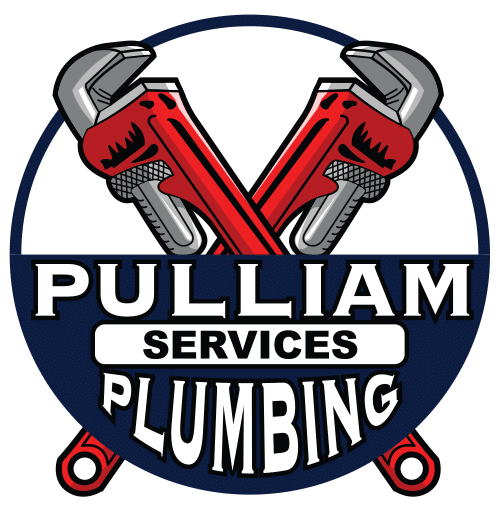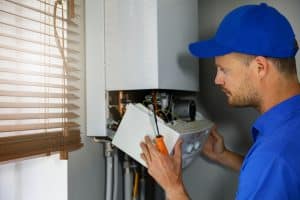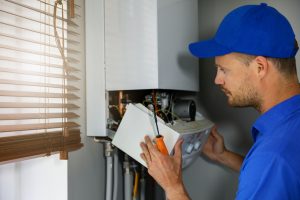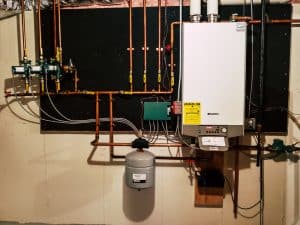Are you considering a tankless water heater for your home? You’re not alone. Many residents in Boerne and Fair Oaks, Texas, are switching to these efficient units for their endless supply of hot water and energy-saving benefits. A tankless water heater operates on-demand to heat water instantly, which means no energy is wasted in heating a tank full of water you aren’t using. This eco-friendly option not only reduces your household’s energy consumption but also lowers your monthly utility bills.
Before we dive into the installation process, it’s essential to understand the different types of tankless water heaters available and decide which is suitable for your home’s needs. Whether you’re a DIY enthusiast or just wanting to understand the process before hiring a professional, having this knowledge will be invaluable.
In the following sections, we’ll outline everything from the tools you’ll need to a detailed step-by-step installation guide and even tips on how to maintain your new unit once it’s up and running. This guide aims to simplify the process and ensure that you get the most out of your new tankless water heater.
Understanding Tankless Water Heaters: Benefits and Types
Tankless water heaters, also known as on-demand water heaters, offer a modern and efficient way to manage your home’s hot water needs. Unlike traditional water heaters that constantly heat and reheat water to maintain it at a set temperature, tankless units heat water directly without the use of a storage tank. This method ensures that you only use energy to heat water when it’s actually needed, leading to significant energy savings. On average, homes utilizing tankless water heaters enjoy 24% to 34% more energy efficiency for households that use less than 41 gallons of hot water daily.
In addition to energy savings, tankless water heaters also provide an unlimited supply of hot water, perfect for large families or homes with high hot water needs. They are available primarily in two types: electric and gas. Electric models are easier to install and generally require less upfront investment. However, gas models, while typically more costly to install, can handle larger demands for hot water and are usually more cost-effective over time due to lower operating costs.
Required Tools and Materials for Tankless Water Heater Installation
Before embarking on the installation of a tankless water heater, ensuring you have the right tools and materials is crucial for a smooth and safe installation process. Here’s a list of essential items you’ll need:
- Adjustable wrenches
- Screwdrivers
- Pipe wrench
- Tape measure
- Drill and bits
- Copper pipe or flexible stainless steel water connectors, depending on the type of tankless unit
- Fittings, including elbows, tees, and unions
- Gas line shutoff valve (for gas models)
- Teflon tape or pipe thread compound
- Vent piping (for gas units)
- Electrical materials, including wire and conduit (for electric models)
It’s important to follow local codes and manufacturers’ guidelines closely when gathering materials and tools. Missing one or not following instructions could lead to a faulty installation, which might impede the efficiency of your new tankless water heater or, worse, compromise your safety. Additionally, if you feel unsure about handling any part of the installation, we strongly suggest reaching out to our professional plumbing team, who are well-equipped and trained to ensure a proper set up.
Step-by-Step Installation Process for Your Tankless Water Heater
Installing a tankless water heater involves a series of detailed steps to ensure that the unit functions efficiently and safely. The first step is to shut off the main water supply to avoid any potential water mishaps during the installation process. Next, if you are replacing an old water heater, you need to disconnect and remove it before setting up the new tankless model. This might require detaching old water supply lines and possibly rerouting some depending on the new unit’s requirements.
Once the area is prepped, mount the tankless water heater on a wall, as most are designed for vertical installation. It’s crucial to ensure that it is securely attached and level to operate correctly. Connect the water heater to the existing water lines. In the case of gas models, it’s essential to connect the gas supply line using the proper shutoff valves and sealants, ensuring there are no leaks. For electric models, hook up the electrical connections, adhering strictly to local electrical codes. Finally, any necessary venting should be installed outdoors, especially for gas models, to handle the combustion fumes efficiently.
Maintenance Tips to Keep Your Tankless Water Heater Running Smoothly
Regular maintenance is key to maximizing the lifespan and efficiency of your tankless water heater. At least once a year, a thorough inspection and cleaning of the unit are performed. This involves checking for any mineral buildup or debris in the filters and flushing the system to clear out these materials. Hard water areas might require more frequent checks as minerals accumulate faster, which can affect the heater’s functionality.
Besides cleaning, it’s important to check all connections regularly—whether gas, water, or electrical—to ensure they are secure and leak-free. If your model uses a filter, replace it as recommended by the manufacturer. Lastly, keeping the area around your tankless water heater clean and unobstructed is crucial to ensure adequate airflow and prevent overheating.
Conclusion
Tankless water heaters represent a significant advancement in water heating technology, offering numerous benefits such as energy efficiency, endless hot water supply, and a longer lifespan compared to traditional tank heaters. Installing and maintaining such a unit requires a clear understanding of the proper steps and regular upkeep to ensure it operates at its best.
If you’re considering upgrading to a tankless water heater or require professional service for your existing system, our team is here to help. As the highest-rated plumbing company in Boerne & Fair Oaks, Texas, we at Pulliam Plumbing pride ourselves on delivering exceptional service and expert guidance. Whether it’s installation, maintenance, or repair, trust us to handle your plumbing needs with the utmost care and professionalism.
Contact our plumbers in Boerne, TX today to learn more about our services and how we can assist you in making the most of your plumbing investments.




